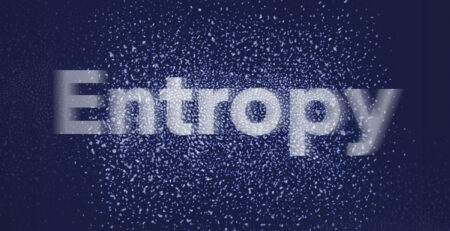There are many detours, roadblocks, and challenges to overcome in the journey to the cloud. However, the benefits outweigh the hardship: faster innovation, cost reductions, and more satisfied customers. After all, in this competitive digital marketplace, it’s the innovators that often capture the hearts and minds of customers.
AWS and Moogsoft can help in your journey to the cloud, as customers will realize the benefits of automating operations for cloud and hybrid environments. Moogsoft recently achieved the Amazon Web Services Cloud Management Tools Competency status, bolstering the AWS-Moogsoft relationship and accelerating the collaboration to deliver even more automations. This includes the ability to blueprint the installation and configuration of Moogsoft, provide zero touch configuration of data ingestion from sources such as Cloudwatch, run manual and automated remediations with AWS Systems Manager automation policies, and more.
The Economic Value of Moogsoft AIOps
Stephen Orban, Global Head of Enterprise Strategy at AWS, does an excellent job of sharing the challenges and success stories of many large organizations who embarked upon the journey to the cloud. His book, “Ahead In The Cloud: Best Practices for Navigating the Future of Enterprise IT,” lays out the strategy for achieving successful cloud migrations through six R’s:
- Rehosting “lift and shift” – Picking the application up and hosting it in AWS
- Replatforming “lift tinker and shift” – Adopting some AWS services but no re-architecting of the applications
- Repurchasing – Moving to SaaS-based apps such as Salesforce and Workday
- Refactoring/Re-architecting – Rebuild the applications using cloud-native features (elasticity, eliminate configuration drift, code as infrastructure)
- Retire – Decommission it
- Retain – Do nothing
Moogsoft AIOps has a part to play no matter which of the six R’s is being used as the migration path. The economic value is similar across each R when it comes to eliminating the operational tax, ensuring optimal service delivery, and preventing the migration stall.
Economic Value Point 1: Eliminating the operational tax and reducing costs
In the past, when environments were static, operators could use tribal knowledge to quickly discern and determine the problem areas. In today’s dynamic infrastructures, problems are rarely due to a single root cause. The complexity of finding root cause is far beyond the human mind due to the volumes and varying types of data to be analyzed.
This is where Moogsoft AIOps can bring operational tax relief and drive down the cost of operations. By continuously ingesting the mammoth proportions of operational data, algorithms are used to reduce noise, cluster alerts across domains and provide actionable Situations and tickets. The algorithms do the job of determining what is relevant as opposed to the best guess work of the human mind.
Economic Value Point 2: Ensuring Optimal Service Delivery
When service impacts occur, Moogsoft AIOps provides a collaborative workflow to quickly identify, troubleshoot and resolve problems. The prior work of eliminating noise and clustering relevant alerts allows operators to have actionable data at their fingertips. Instead of staring at thousands of critical alerts in a console, the operators are presented with Situations consisting of cross domain clustered alerts. The operators also have quick reference to similar Situations and Probable Root Cause (PRC) analysis based on the neural net and knowledge recycle. All of these capabilities help to drastically reduce the MTTR and ultimately deliver a better customer experience.
Economic Value Point 3: Preventing the Cloud Migration Stall
If the previously discussed barriers of high operational tax and impacts to service delivery can be eliminated, more resources can be focused on innovation as opposed to firefighting. When operations is not considered in the cloud journey, the whole project can stall. With the volumes and variety of events being delivered to operations, the legacy way of solving the problem will not work. The legacy methodology relied on tribal knowledge, static rules, and filters looking for known conditions. More and more types of issues are coming to operations that have never been witnessed before.
The algorithmic approach of Moogsoft AIOps will ensure that operations can run efficiently and keep the team focused on innovation and the journey to the cloud. AWS and Moogsoft have been working together to bring the value points discussed above to the market in an easy repeatable deployment model. The following will give more insights into the interworking of the automation blueprint.
There are new processes, new tools, new teams and in the midst of all of this newness, automation becomes critical to the success of the overall cloud migration project
Automating with AWS CloudFormation
AWS CloudFormation is a managed service that enables you to describe and provision cloud infrastructure in your cloud environment using a common language. AWS CloudFormation Templates (CFTs), can be written in JSON or YAML, and edited with any text editor.
Using Cloudformation, you model your entire infrastructure in an extensible and straightforward document. This process is known as “infrastructure as code.” When you deploy a CloudFormation in your environment, it creates a Stack. The Stacks can be created, updated, and destroyed. If an error occurs during creation or while updating, CloudFormation automatically rolls back to the environment to the last known steady state.
CloudFormation Templates can be checked into your version control system to become the single source of truth for your cloud environment. Your organization can achieve configuration compliance and operational excellence by standardizing infrastructure components used across your organization. Provision your resources in a safe and repeatable manner.
Upon completion of deploying the CloudFormation Stack, the result will be AWS services and components integrated into the Moogsoft AIOps system.
Automation with CloudFormation and Moogsoft AIOps
Moving to the cloud consists of doing things a different way. There are new processes, new tools, new teams and in the midst of all of this newness, automation becomes critical to the success of the overall cloud migration project. The more automation, the more focus can be put on making the cloud transition and deployment successful. Moogsoft and AWS are doing our parts to help make the operational aspects as comfortable as possible.
Automation has the benefits of producing a blueprint of how to deploy applications, AWS services, and components and the management tools that help to operationalize the environment.
This automation approach adheres to agile and iterative development processes. As the automation continues to evolve, it allows for the reinvention of how application services get delivered in the cloud with a repeatable and consistent deployment process.
The advantage of using the Moogsoft AIOps CloudFormation Stack include:
- Creates a repeatable and consistent deployment blueprint
- Shortens the implementation duration
- Codifies best practices
- Allows for iterative growth of expanded automation capabilities
- Automates the installation of Moogsoft AIOps
- Automates the integration of Moogsoft and AWS Services and Components
- Configures the AWS environment for secure and reliable access
- Instantiates the necessary AWS infrastructure
- Quick time to value for operations of the new cloud infrastructure
This is all achieved by filling out a few input parameters for the CloudFormation Template and then letting the automation complete. The input screen used to create the Moogsoft AIOps stack is shown below.
The end result of running the CloudFormation template produces a fresh Moogsoft AIOps install and all necessary integration configurations to connect to services such as Cloudwatch. Within the Moogsoft AIOps Situation room, the events from Cloudwatch have been ingested along with algorithmic noise reduction and clustering.
With this easy step completed, IT Operations will now have visibility into the applications and infrastructure running in the AWS cloud environment. As the cloud migration continues, you can be assured that AWS and Moogsoft will be providing valuable insights into the service delivery of your cloud-based applications and services.
Contributing Author: Brian Terry
Brian Terry is a Partner Solutions Architect for AWS and is the lead solutions architect for the Cloud Management Tools partner segment. Brian enjoys building infrastructure with CloudFormation and creating serverless applications in Golang.






